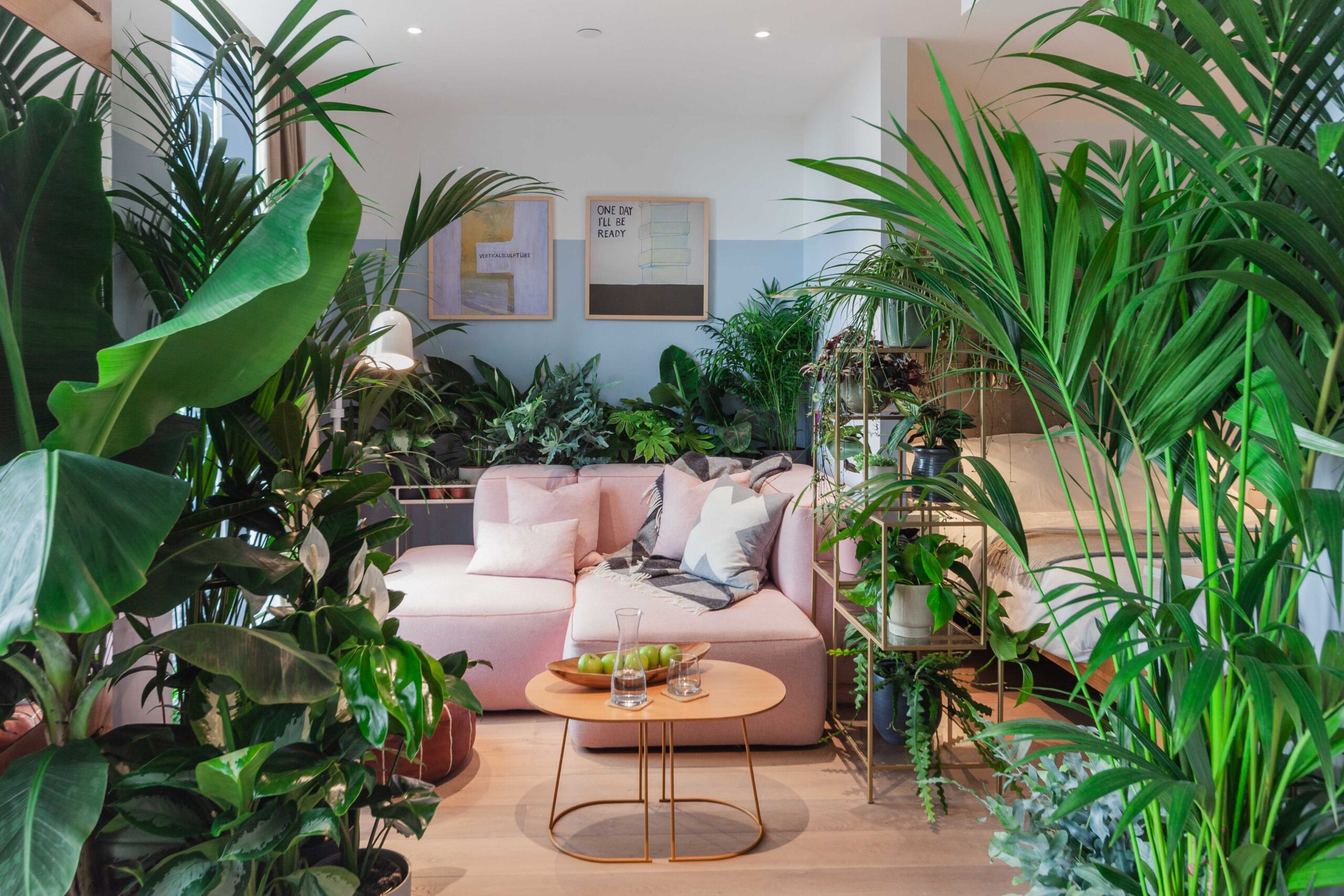Table Of Content

The key issue is that some designed environments are well-adapted (supporting long term life) and some are not. So while golf courses and suburban lawns may be a savanna analogue, in many cases they require intense inputs of water and fertilizer and thus are unfortunately unsustainable design practices. Alternatively, it could be argued that everything, including all that humans design and make, is natural and a part of nature because they are each extensions of our phenotype. This perspective inevitably includes everything from paperback books and plastic chairs, to chlorinated swimming pools and asphalt roadways.
Natural Material
The lobby of the Bank of America Tower at One Bryant Park in New York (COOKFOX Architects, 2009) is a good example of a diverse application of Material Connections with Nature. The interior lobby walls are clad with Jerusalem Stone – the tiles with the highest fossil content were intentionally placed at the corner where they would be most encountered and even touched by passersby. Leather paneling in the elevator lobby is warm in color, providing a sense of calm for people as they wait for their ride, and soft to the touch, from which the patina has begun to show.
Biophilic Design Basics

If design doesn’t focus on aspects of the natural world that contribute to human health and productivity in the age-old struggle to be fit and survive, it’s not biophilic. Biophilic design first took off in commercial settings, but now it’s becoming popular in homes as well. It’s really gaining steam in office buildings, where Mumford says managers use it to entice people back from their home offices. Plants also transpire which is the process of water evaporation through their leaves. If we add more permeable materials and add green walls and urban forests, water will not run off into rivers and saturate them, water will pass through and flow naturally.
Building science-based valuations for using nature in all sorts of spaces.
Thus, simply inserting an object of nature into a human built environment, if unrelated or at variance with other more dominant characteristics of the setting, exert little positive impact on the health and performance of the people who occupy these spaces. A visual connection to nature is a view to natural elements, processes and living systems. This connection to nature has yielded the highest restorative effects when compared to all other biophilic patterns. Scientific evidence has supported that a visual connection to nature can reduce blood pressure and heart rate, improve mental health and attentiveness, and increase our overall attitude and happiness. In the built environment, direct experiences of nature refer to plants, light, water—any aspect that provides direct contact with green elements.
Biophilia in Context looks at the evolution of biophilic design in architecture and planning and presents a framework for relating the human biological science and nature. Design Considerations explores a sampling of factors (e.g., scale, climate, user demographics) that may influence biophilic design decisions to bring greater clarity to why some interventions are replicable and why others may not be. The Patterns lays out a series of tools for understanding design opportunities, including the roots of the science behind each pattern, then metrics, strategies and considerations for how to use each pattern. This paper moves from research on biophilic responses to design application as a way to effectively enhance health and well-being for individuals and society.
Utilise natural lighting
Creating Biophilic Buildings by Amanda Sturgeon calls for an intentional biophilic design renaissance providing a fresh, insightful place to begin exploring how to create places where people and nature can thrive together. And Siason enlarged the horizontal window to give Koenig her ocean view and bring more light in, although the bathroom already had a skylight above. The sandblasted glass partitions leading to the toilet keep that open feel, even as they provide some privacy. Biophilic design promotes positive interactions between people and nature that encourage an expanded sense of relationship and responsibility for the human and natural communities.

One study found that redesigning an ICU to incorporate more outdoor views and daylight led absentee rates to drop by 39.5%, while staff vacancies decreased by 25%. Investigators also saw a correlation between the use of outdoor break spaces and resiliency among nurses. Ulrich’s work has inspired research into the effects of other biophilic design principles on patients. These studies found that patients benefited from brighter rooms and more access to daylight, views to the outside (both real and simulated), and exposure to plants – with subjects experiencing faster healing times or shorter hospital stays. A passionate advocate for biophilic design, he’s dedicated to creating and innovating sustainable, nature-centric built environments using plants, moss and natural materials.
Unfortunately, too much of our modern design is oblivious to this profound knowledge. When asking people to think about their favorite places for vacation, the majority will describe some place outdoors; we use the term ‘recreation’ and forget that recreation is about recreating, restoring ourselves. So while empirical evidence is accumulating, we ought to go about restoring the human-nature connection in the built environment.
Lean into natural materials
Participants considered the sound to be pleasurable when viewing the video of waves, but not when viewing the video of traffic. This study suggests a strong connection between our visual and auditory sensory systems and psychological well-being. Just as combinations of culture, demographics, health baselines, and characteristics of the built environment can impact the experience of space differently, so too can each design pattern. A suitable solution results from understanding local conditions and one space’s relationship to another, and responding appropriately with a combination of design interventions to suit the unique needs of a space and its intended user group and programs.
The main health benefits are experienced through the predicting or anticipating of what might be revealed in the space. A quality mystery condition promotes curiosity, and as a result strong pleasure responses are activated in the brain (Fujii & Kudo, 2012). These pleasure responses are seen through VTA dopamine neurons activating, and this commonly happens when something unexpected yet good occurs. Over the past decade knowledge regarding the impact light can have on regulating circadian rhythms has increased.
Diving Into Biophilic Design - Facility Executive Magazine
Diving Into Biophilic Design.
Posted: Tue, 06 Jun 2023 07:00:00 GMT [source]
A quality mystery condition does not engender a fear response; the conditions that differentiate between surprise (i.e., fear) and pleasure center around the visual depth of field. An obscured view with a shallow depth of field has shown to lead to unpleasant surprises, whereas greater visual access, with a medium (≥20 ft) to high (≥100 ft) depth of field is preferred (Herzog and Bryce, 2007). Mystery is the promise of more information achieved through partially obscured views or other sensory devices that entice the individual to travel deeper into the environment.
The cathedral-like in structure designed by Santiago Calatrava (1992) is information rich, yet protecting, with its orderly columns that rise up into a canopy of complex tree-like forms, showers diffuse light and shadow onto the courtyard, and keeps visitors awestruck and engaged. Fractals can exist at any scale, from desktop trinkets or textile patterns, to façade design, to a city grid or regional transport infrastructure. Scenes in nature typically support multiple fractal dimensions – savanna landscapes often support mid-range fractal dimensions – so there are potentially many opportunities to incorporate fractals. The Khoo Teck Puat Hospital in Singapore by RMJM Architects uses fresh air and sunlight to increase thermal comfort.
While we have no intention of formalizing an explicit definition, some articulation of what we mean by ‘nature’ will help give context to practitioners of biophilic design. Additionally, this idea of nature essentially excludes everything from the sun and moon, your pet fish Nemo, home gardens and urban parks, to humans and the billions of living organisms that make up the biome of the human gut. New research supports measureable, positive impacts of biophilic design on health, strengthening the empirical evidence for the human-nature connection and raising its priority level within both design research and design practice; however, little guidance for implementation exists. This paper is intended to help close the gap between current research and implementation. The intended audiences of this publication are interior designers, architects, landscape architects, urban designers, planners, health professionals, employers and developers, as well as anyone wanting to better understand the patterns of biophilia. Building upon “The Economics of Biophilia” (1. Terrapin Bright Green, 2012 ), the intent of this paper is to articulate the relationships between nature, science, and the built environment so that we may experience the human benefits of biophilia in our design applications.
“14 Patterns of Biophilic Design” articulates the relationships between nature, human biology and the design of the built environment so that we may experience the human benefits of biophilia in our design applications. Biophilia is buzzing now, but it originated in a 1984 book by Edward O. Wilson, an American biologist who believed that humans have a deep psychological connection to other living organisms. Biophilic design is the idea that “the presence of natural, outdoor elements like plant life provide measurable benefits to our mental and physical well-being,” says Carr. Enter biophilic architecture, living spaces that connect occupants more closely to nature.

No comments:
Post a Comment